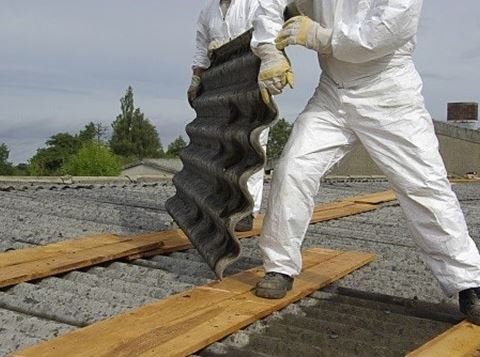Today, the risks associated with asbestos are well and widely known. We know that even a single airborne fibre risks triggering the development of a range of respiratory conditions, years or even decades later. Whilst the risks from asbestos were well known by the medical field as early as the mid-1920s, public awareness of risk (and therefore our wider societal response) remained low until the early 1990s. The UK went on to ban asbestos in 1999, almost seventy years after its first use.
In the UK, around 5,000 people die from asbestos-related conditions[1] (chiefly lung cancers and Mesothelioma) each year. While annual fatalities have remained around the 5000 mark for several years, the long shadow cast by asbestos has not yet reached its full height.
We know that, since the introduction of regulation and legislation around the use, maintenance, and management of asbestos, public exposure has been reduced. Additional provisions and precautions should be in place, from PPE and respiratory equipment to physical barriers preventing access to spaces where work is being undertaken.
Many asbestos-related conditions present decades later (known as long-latency) meaning that the bulwark of the cases being diagnosed today come from the 1960s-1980s.
Many health and safety practitioners expect an asbestos-related time bomb which sees presentation numbers, and therefore fatalities, rise sharply to cover asbestos exposure in the late 1980s and 1990s – before the UK ban was introduced. Today the UK has the highest global presentation of Mesothelioma[2] and a sharp rise in asbestos-related illnesses will only contribute to worsening public health outcomes across the UK.
Still present in workplaces across the UK, the risks from asbestos exposure have not changed, what has changed is our level of knowledge, our response, and our vigilance around the safe management and maintenance of asbestos.
Anecdotally, we see a higher presentation of Asbestos in residential buildings not covered by the same regulatory regime as commercial buildings. Whilst your home may not be a workplace day to day, it may be (or become) someone’s workplace; from electricians installing smart meters to glazers refitting windows. These considerations, not picked up by legislation, risk exposing workers to asbestos in a residential postcode lottery that is likely to continue to contribute to the presentation of asbestos-related conditions for years to come.
HSE-led public education, through campaigns like ‘Asbestos and You’ and ‘Asbestos: Your Duty’ has been central to raising public awareness, reducing risk, and, we hope, reducing future cases of asbestos-related issues.
Last month, the British Safety Council published our Health, Safety, and Wellbeing Manifesto ahead of a UK General Election expected later this year. A key focus was the provision of adequate funding for the Health and Safety Executive, the Buildings Safety Regulator, and local authorities that hold the responsibility for the regulation and inspection of health and safety, by any future Government.
Our call recognises the challenges that an asbestos-related time bomb poses for a regulator whose funding sits £43 million lower today than it did in 2010 (a real terms cut of 18.85% when compared against 2010 figures).
This Global Asbestos Awareness Week (1-7 April) we renew our call to ensure that the HSE has the funding it needs in order to provide an effective response to the challenges posed by a growing number of asbestos-related illnesses. Health and safety must not be an area where the regulator is forced to rob Peter to pay Paul. Funding is needed to tackle asbestos-related challenges alongside the other vital – and ongoing - areas of their work.
[1] Asbestos and You | HSE Media Centre
[2] Asbestos-related cancer deaths fall but ‘time-bomb’ threatens (cieh.org)

